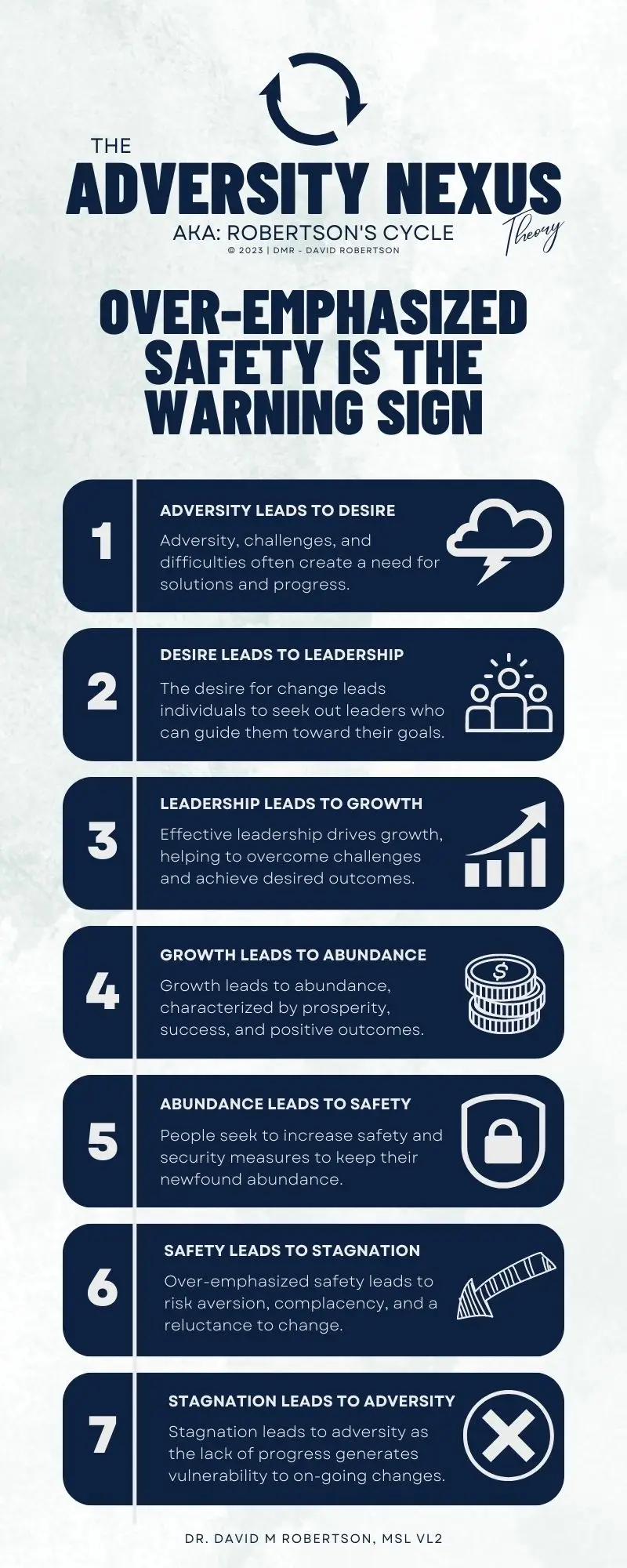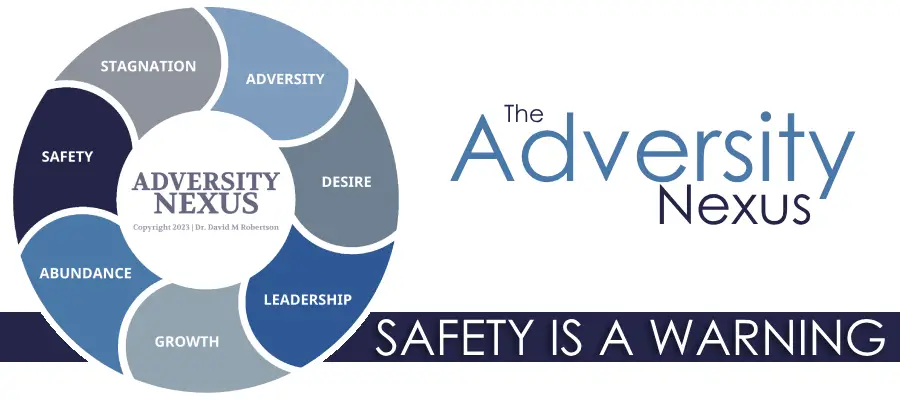The Adversity Nexus: The Danger of Safety
The “Adversity Nexus,” also known as “Robertson’s Cycle,” is a comprehensive model that outlines the interconnected stages governing the rise and decline of individuals, organizations, and nation-states. The model emphasizes the interplay between adversity, leadership, growth, abundance, safety, and the potential pitfalls of focusing excessively on security.

The key stages of the Adversity Nexus are as follows:
- Adversity leads to Desire: Adversity and challenges act as catalysts, igniting a desire for change and improvement. Difficulties prompt individuals and entities to seek solutions and progress.
- Desire leads to Leaders: The desire for change leads to the emergence of transformative leaders who challenge norms and navigate uncharted territories. These leaders drive innovation and change.
- Leaders lead to Growth: Transformational leaders catalyze growth by fostering innovation, encouraging risk-taking, and promoting adaptability. This phase is characterized by rapid decision-making and resource allocation.
- Growth leads to Abundance: Effective leadership and growth efforts result in tangible advancements and opportunities. The cycle enters a phase of abundance marked by substantial progress and innovation.
- Abundance leads to Safety: Prosperity can breed complacency and paradoxical efforts as attention shifts toward safeguarding achievements and power.
- Safety leads to Stagnation: Overemphasis on safety can hinder growth and innovation. Comfort zones expand, change becomes unwelcome, control measures increase, and risk-taking diminishes, leading to stagnation.
- Stagnation leads to Adversity: Stagnation halts and then reverses growth, leading to a decline in problem-solving, resource allocation, and overall effectiveness. The cycle completes as the consequences of stagnation result in renewed adversity.
The Adversity Nexus offers insights into the dynamics of progress and stagnation, emphasizing the importance of a balanced approach that integrates change and safety. While the model provides clear stages, it acknowledges the complexities of real-world scenarios that may not follow a linear progression. The model’s implications include equipping individuals and organizations with a strategic framework to navigate challenges and prevent stagnation.
Additionally, the concept of safety is highlighted as a potential hindrance to progress when overemphasized. Various manifestations of safety concerns are explored, from personal risk aversion to regulatory red tape, illustrating how safety can impede innovation and growth. The model suggests that leaders must be vigilant in recognizing and addressing safety-driven behaviors that may lead to stagnation.
Overall, the Adversity Nexus provides a roadmap for understanding the intricate dynamics of success and failure, emphasizing the need to strike a balance between embracing change and safeguarding against stagnation.
You can learn more about this model by CLICKING HERE – you will be taken to the theory’s primary page on the National Leaderology Association‘s website. You can see for yourself how the cycle presents itself by looking at the cycles.




